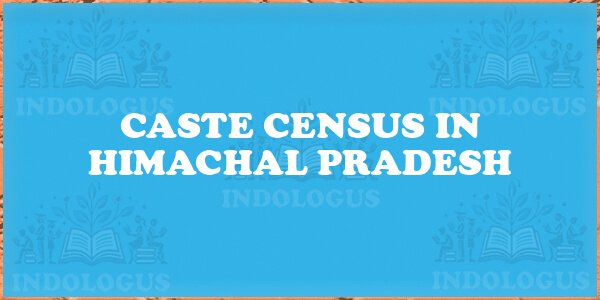The Government of India has announced a detailed caste Census in Himachal Pradesh, set to begin in 2026. The initiative aims to gather comprehensive data on the caste composition of the state, addressing its diverse demographic landscape. The Census will commence in snow-bound areas before expanding to the rest of the state in 2027, considering the unique challenges posed by their geographical conditions.
Caste Composition of Himachal Pradesh
- Himachal Pradesh has a population of approximately 77.56 lakh.
- Scheduled Castes (SCs) constitute around 25% of the population.
- Other Backward Classes (OBCs) account for 13.52%.
- Scheduled Tribes (STs) make up about 5.71%.
Recognized Castes
- The state recognizes 57 castes as SCs.
- The Hattee community was granted ST status in 2023.
Census Methodology
The Census will be conducted by state government employees, including teachers and anganwadi workers, who will receive training in data collection methods. Enumerators will gather information through door-to-door surveys, utilizing digital tools and paper forms. The process will involve verification against official documents and the analysis of caste-related socio-economic data.
Ongoing Caste-Related Disputes
The Hattee community’s ST status is currently under judicial review, with SC and OBC representatives contesting this status due to fears of diluted benefits. The Himachal Pradesh High Court has placed a stay on the notification, with a hearing scheduled for July 2027, potentially impacting the Census process and the community’s status.
Political Implications
The caste Census is anticipated to have diverse impacts on state politics. While some experts believe it may not alter political dynamics significantly, others argue that it could reshape welfare policies. Out of 68 Assembly constituencies, 17 are reserved for SCs and 3 for STs, with regional factors often outweighing caste considerations in electoral politics.
Expert Opinions
Political experts hold varying views on the Census’s impact, with some emphasizing its value in providing socio-economic data while questioning its potential to change the existing political landscape. Onkar Chand Sharma suggests that the Census could influence political dimensions in the state, marking the first comprehensive caste enumeration since 1931.
Key Takeaways for Competitive Exams
- Himachal Pradesh’s caste Census aims to provide comprehensive data on the state’s demographic composition.
- The Census will start in snow-bound areas before expanding to the rest of the state in 2027.
- The state recognizes 57 castes as Scheduled Castes and recently granted ST status to the Hattee community.
- The political implications of the Census may vary, with potential impacts on welfare policies and electoral dynamics.
- Experts hold differing opinions on the Census’s influence on state politics, highlighting its significance as the first extensive caste enumeration since 1931.



